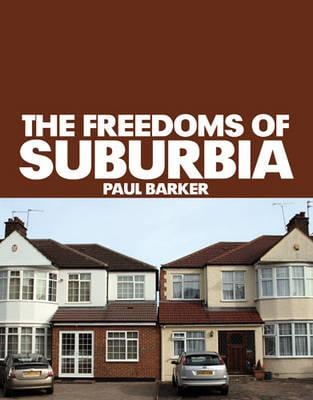They are cutting hay in the Haymarket. A woman is laying out clothes to dry on the grass of Aldgate, and stags patrol where St. James’s Park will be one day, staring in puzzlement at the vast abbey protruding above the willows of Westminster. It is London as delineated by Ralph Aggas circa 1590, reproduced in a six-foot-long Victorian print now on the wall of my cottage. It is a captivating vision of a city that has not yet escaped its Roman circumvallation—a compact conurbation traversable in 30 minutes, where the sound and scent of cattle could infiltrate the stateliest salons.
The remotest places on Aggas’s map—Hampstead in the Middlesex hills, King’s Cross beside the Battle Bridge, St. Giles-in-the-Fields—have long since been subsumed into London, becoming exurbs, then suburbs, and ultimately “inner-city.” Beyond these early ingested hamlets now lie almost 100 square miles of suburbia, where often the only reminders of what lies beneath are relict medieval churches and street names commemorating what was there before the speculators came—Meadow Close, Lark Rise, Manor Park, Tilt Yard.
Yet the ideal of the manageable city is undergoing a revival, espoused both by countryside campaigners and metropolitans who insist on being near the Tube and Tate Modern. These unlikely yokemates share a disdain for London’s sea of villas, semis, terraces, tower blocks, and prefabs, which for them are not just unsightly but repositories for an array of undesirable characteristics—smugness, Pooterism, blandness, mediocrity (the sort of traits Woodrow Wilson had in mind when he famously accused Warren G. Harding of having “a bungalow mind”). As Paul Barker notes in this diffuse and often dubious but unfailingly interesting work, “To call anyone or anything ‘suburban’ is to utter a put-down, an anathema, a curse.”
Barker has expended much of his career (mostly at the left-leaning New Society, later absorbed into the New Statesman) to make us appreciate the unfashionable backwaters where some 84 percent of Britons opt (or are constrained) to live. That 84 percent of us live in suburbs is for Barker proof that suburbs are intrinsically superior to inner-city or rural living, because to him the crowd is always wise. He feels these selfsame suburbanites should be able to do effectively what they want with their homes, so he advocates a “non-plan” approach. This is to help overthrow the “class-based aesthetic and metaphysical assumptions” that (apparently) underpin antisprawl campaigns.
Taking a laissez-aller approach to planning will, Barker evidently hopes, wipe away privileges, hierarchies, classes, controls, nostalgia, outmoded concepts of beauty and taste, boundaries, and other horrors from the map—in favor of a low-density, contiguous mélange of “Jigsaw City suburbs” governed by automobility and “choices, choices, choices.”
He presumes, rather rashly, that these choices, choices, choices will be sensible ones. Unfortunately, if left entirely to his own devices, Aggregate Man will opt for whatever is cheapest and most convenient, which in the suburbs will mean more bungalows, more PVC windows, and more cement rabbit “ornaments” in graveled-over gardens. More places would come to resemble Barker’s Elysium—the “non-place urban realm” of Milton Keynes, where “people live as equals,” which he extols as “all very un-English”—although even he admits there are nice areas and less-nice areas. The essentially inhuman nature of Milton Keynes is summed up by one fact: The section of the Roman road known as Watling Street that passes through the municipality is officially referred to as “V4.”
Things that are generally considered to be blights possess strange charm for the author: “I was enchanted by its ordinariness,” he enthuses, when visiting a shopping mall. He waxes philosophical about prefabs: “The only things that last are those which are supposed to be temporary.” He does not consider that people go to shopping malls solely for convenience, and live in prefabs only if they cannot afford something better.
But there are much more serious flaws. The whole idea of treating a few decades of recent history as if they were aeons, and shopping habits as if they were ancient folkways, is risible. The notion of treating all suburbs as one unified phenomenon is misguided, because there are handsome and desirable suburbs (usually those most rigidly monitored by his despised planning officers) and suburbs that ought to be flattened as soon as practicable. Perhaps it was this latter type he had in mind when he wrote, “Certain suburbs have become places to put your immigrants out of sight,” as if national or local authorities ever had such a policy. Barker also underestimates the scale of white flight and does not mention the pressures on space and quality of life caused by overpopulation. He has, incidentally, an ill-informed opinion of one of Middle America’s clearest-eyed champions: “I suspect that Sam Francis was not a nice man to know.”
The author is correct to assert that planners often get it wrong, and that hard-working people deserve pleasant and commodious accommodation that they can enjoy with minimal interference. However, the solution is not less but better planning—planning underpinned by imagination and taste.
[The Freedoms of Suburbia, by Paul Barker (London: Frances Lincoln) 240 pp., $40.00]

Leave a Reply